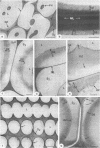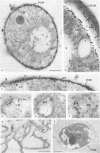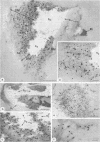Abstract
The distribution of lignin peroxidase during degradation of both wood and woody fragments by the white rot fungus Phanerochaete chrysosporium was investigated by using anti-lignin peroxidase in conjunction with postembedding transmission electron microscopy and immuno-gold labeling techniques. The enzyme was localized in the peripheral regions of the fungal cell cytoplasm in association with the cell membrane, fungal cell wall, and extracellular slime materials. In solid wood, lignin peroxidase was detected in low concentrations associated with both superficial and degradation zones within secondary cell walls undergoing fungal attack. A similar but much greater level of extracellular peroxidase activity was associated with wood fragments degraded by the fungus grown under liquid culture conditions optimal for production of the enzyme. Efforts to infiltrate degraded wood pieces with high levels of lignin peroxidase showed the enzyme to be restricted to superficial regions of wood decay and to penetrate wood cell walls only where the wall structure had been modified. In this respect the enzyme was able to penetrate characteristic zones of degradation within the secondary walls of fibers to sites of lignin attack. This suggests a possibility for a close substrate-enzyme association during wood cell wall degradation.
Full text
PDF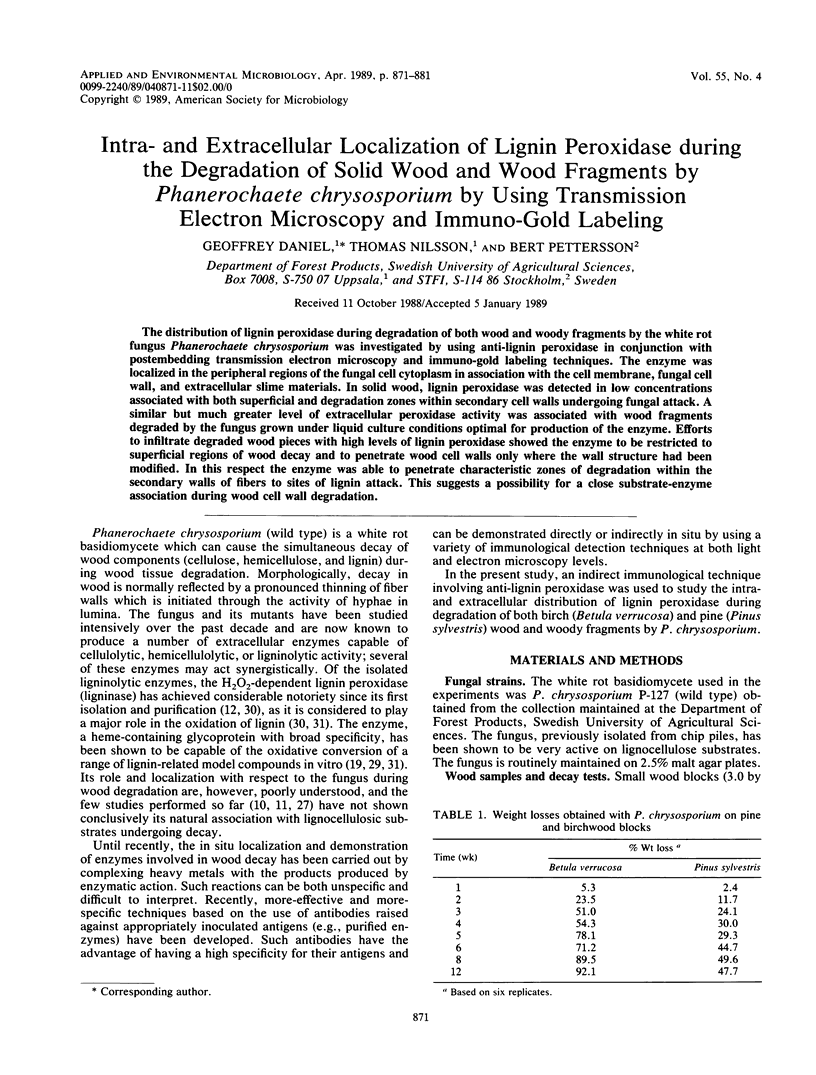
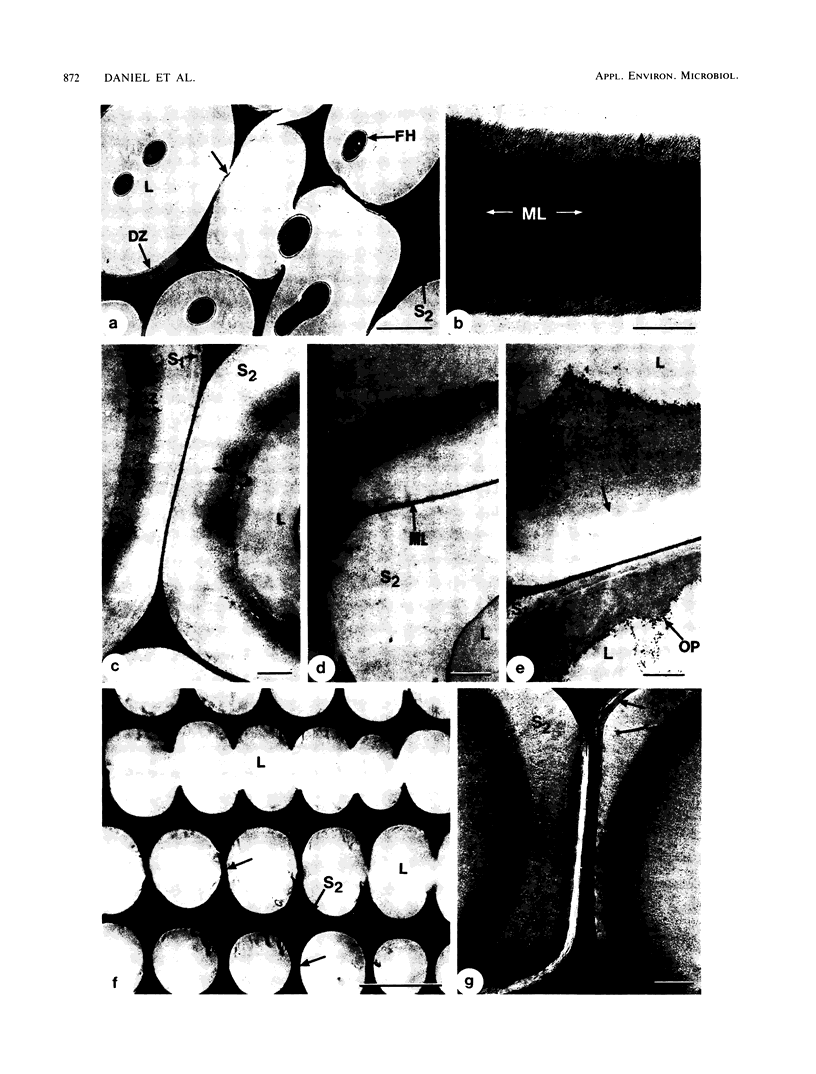
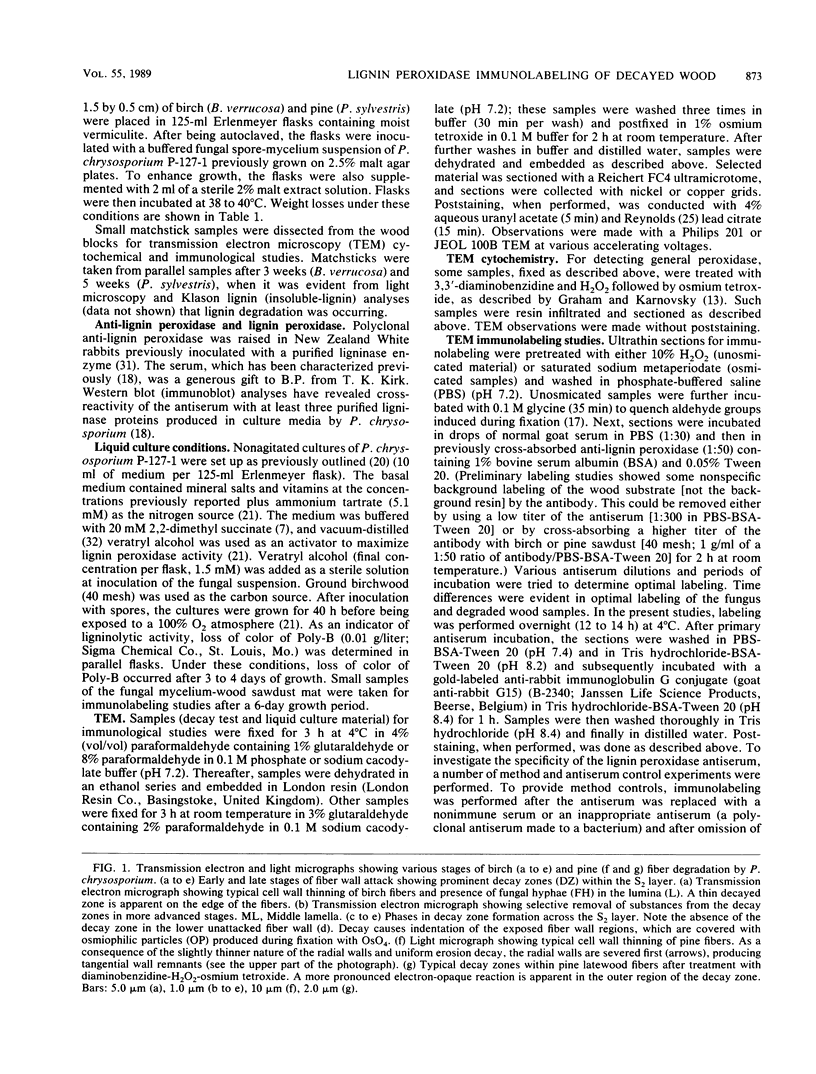
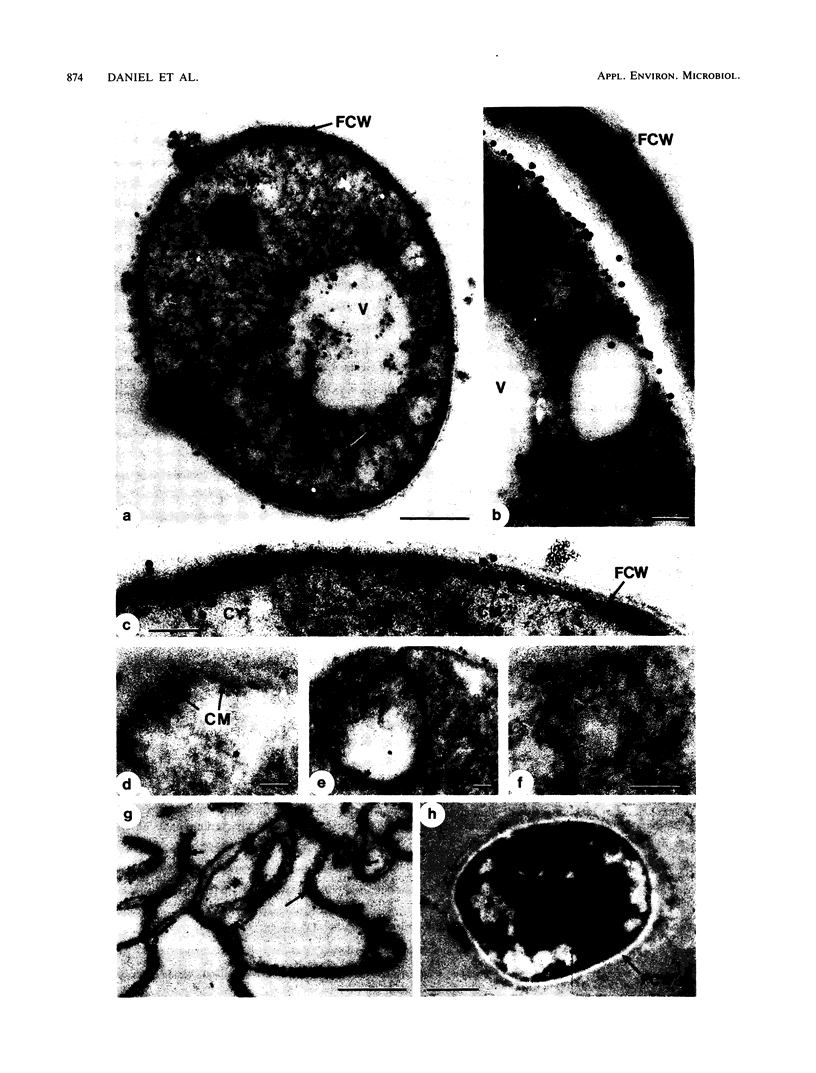
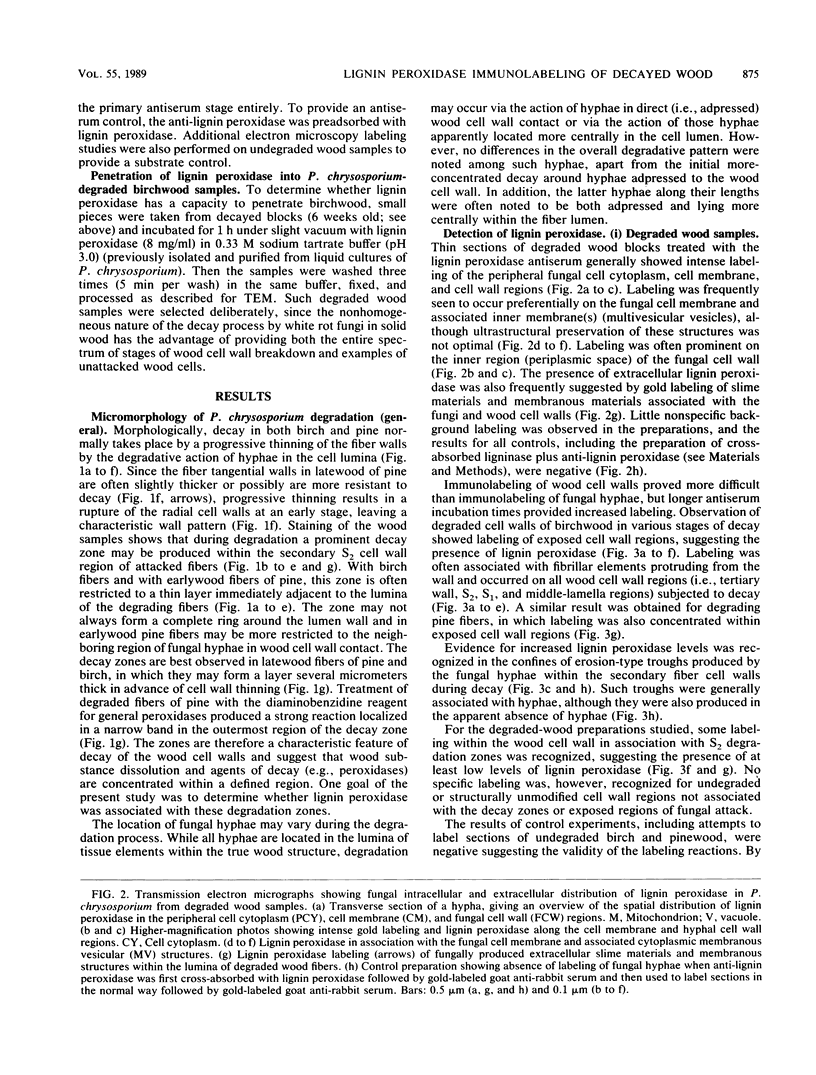
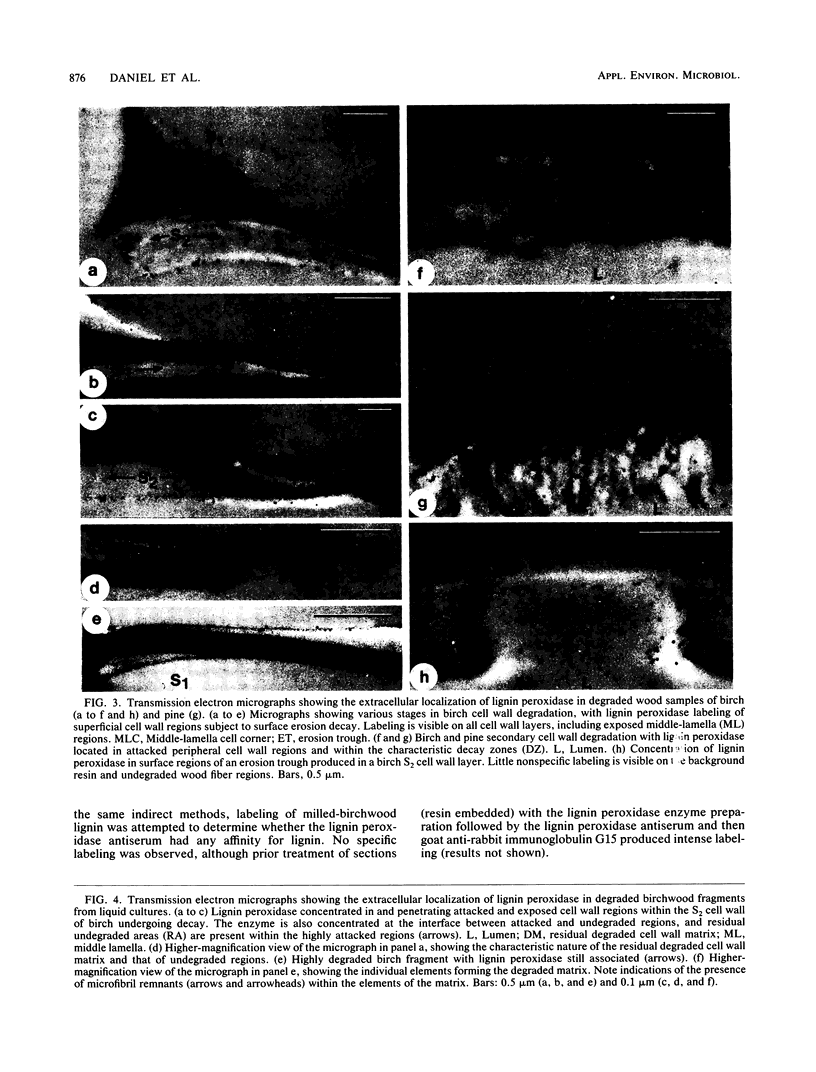
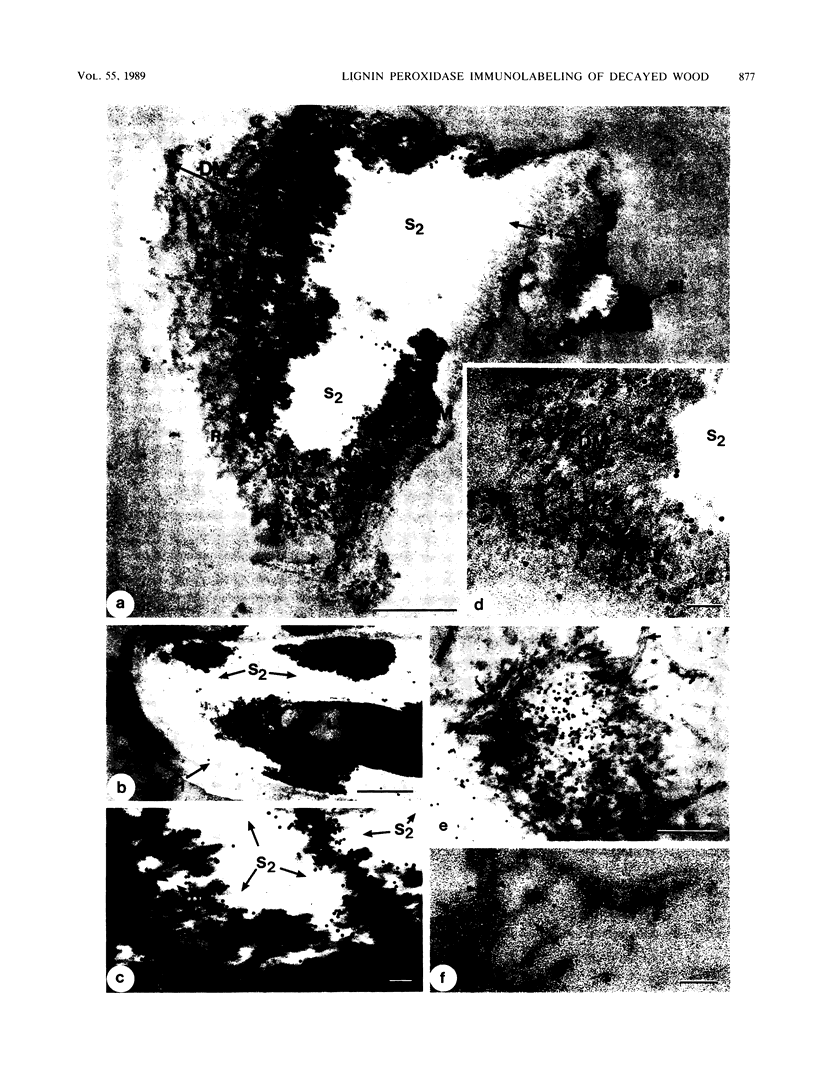
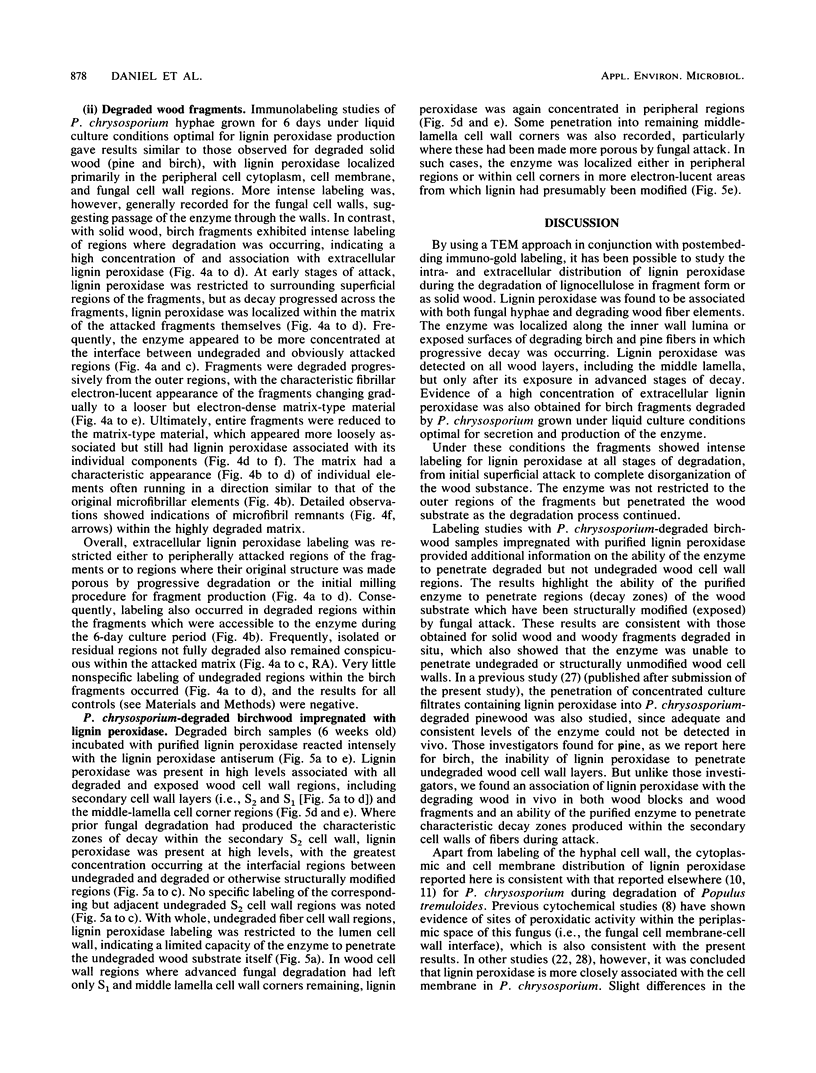
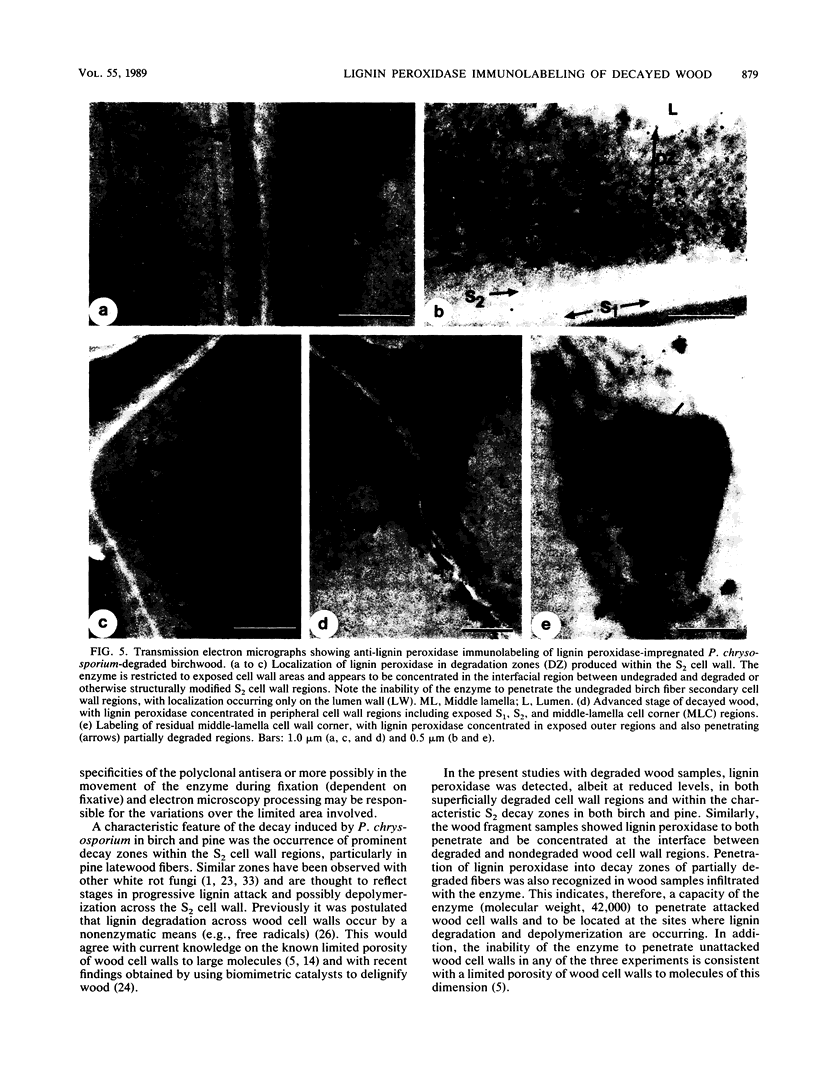
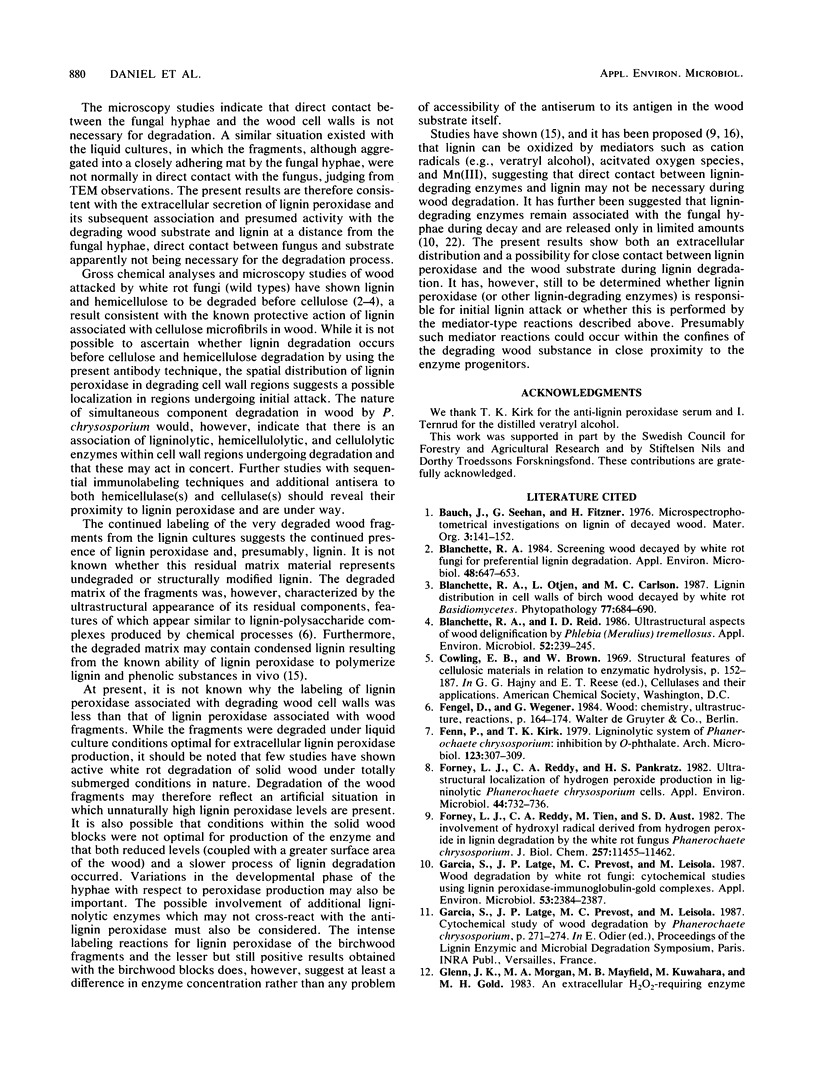
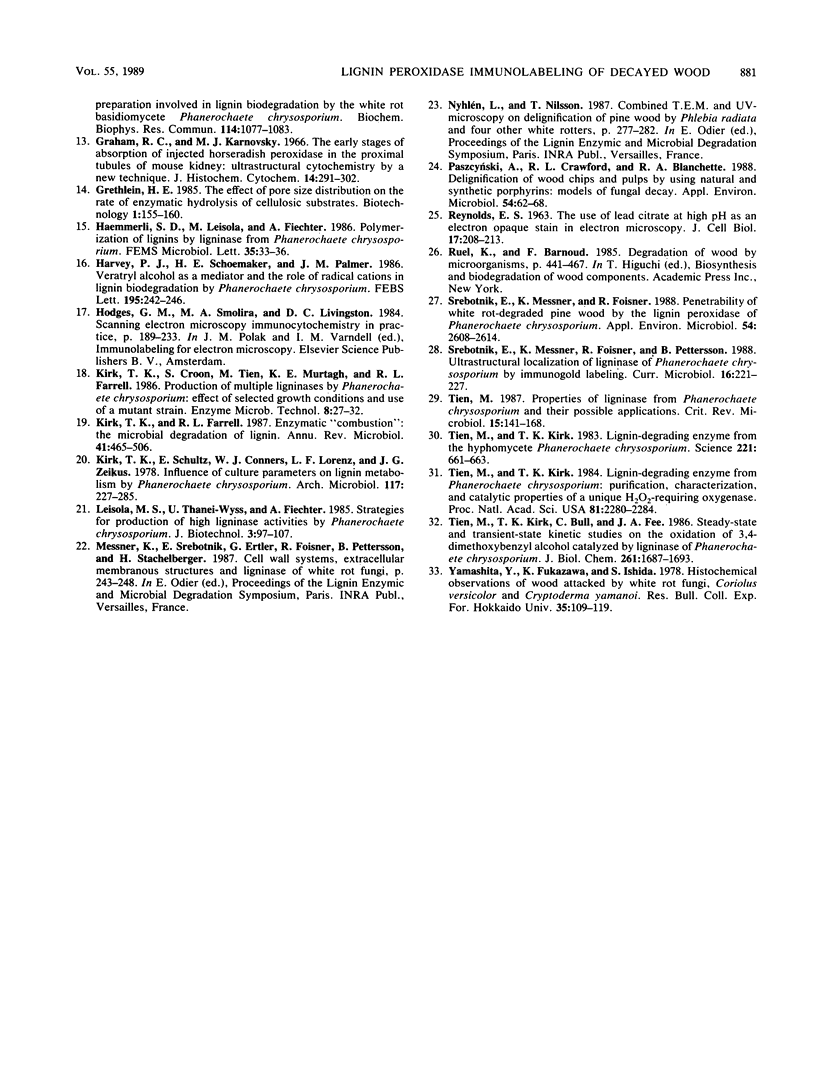
Images in this article
Selected References
These references are in PubMed. This may not be the complete list of references from this article.
- Blanchette R. A., Reid I. D. Ultrastructural Aspects of Wood Delignification by Phlebia (Merulius) tremellosus. Appl Environ Microbiol. 1986 Aug;52(2):239–245. doi: 10.1128/aem.52.2.239-245.1986. [DOI] [PMC free article] [PubMed] [Google Scholar]
- Blanchette R. A. Screening wood decayed by white rot fungi for preferential lignin degradation. Appl Environ Microbiol. 1984 Sep;48(3):647–653. doi: 10.1128/aem.48.3.647-653.1984. [DOI] [PMC free article] [PubMed] [Google Scholar]
- Forney L. J., Reddy C. A., Pankratz H. S. Ultrastructural Localization of Hydrogen Peroxide Production in Ligninolytic Phanerochaete chrysosporium Cells. Appl Environ Microbiol. 1982 Sep;44(3):732–736. doi: 10.1128/aem.44.3.732-736.1982. [DOI] [PMC free article] [PubMed] [Google Scholar]
- Forney L. J., Reddy C. A., Tien M., Aust S. D. The involvement of hydroxyl radical derived from hydrogen peroxide in lignin degradation by the white rot fungus Phanerochaete chrysosporium. J Biol Chem. 1982 Oct 10;257(19):11455–11462. [PubMed] [Google Scholar]
- Garcia S., Latge J. P., Prevost M. C., Leisola M. Wood degradation by white rot fungi: cytochemical studies using lignin peroxidase-immunoglobulin-gold complexes. Appl Environ Microbiol. 1987 Oct;53(10):2384–2387. doi: 10.1128/aem.53.10.2384-2387.1987. [DOI] [PMC free article] [PubMed] [Google Scholar]
- Glenn J. K., Morgan M. A., Mayfield M. B., Kuwahara M., Gold M. H. An extracellular H2O2-requiring enzyme preparation involved in lignin biodegradation by the white rot basidiomycete Phanerochaete chrysosporium. Biochem Biophys Res Commun. 1983 Aug 12;114(3):1077–1083. doi: 10.1016/0006-291x(83)90672-1. [DOI] [PubMed] [Google Scholar]
- Graham R. C., Jr, Karnovsky M. J. The early stages of absorption of injected horseradish peroxidase in the proximal tubules of mouse kidney: ultrastructural cytochemistry by a new technique. J Histochem Cytochem. 1966 Apr;14(4):291–302. doi: 10.1177/14.4.291. [DOI] [PubMed] [Google Scholar]
- Kirk T. K., Farrell R. L. Enzymatic "combustion": the microbial degradation of lignin. Annu Rev Microbiol. 1987;41:465–505. doi: 10.1146/annurev.mi.41.100187.002341. [DOI] [PubMed] [Google Scholar]
- Paszczyński Andrzej, Crawford Ronald L., Blanchette Robert A. Delignification of Wood Chips and Pulps by Using Natural and Synthetic Porphyrins: Models of Fungal Decay. Appl Environ Microbiol. 1988 Jan;54(1):62–68. doi: 10.1128/aem.54.1.62-68.1988. [DOI] [PMC free article] [PubMed] [Google Scholar]
- REYNOLDS E. S. The use of lead citrate at high pH as an electron-opaque stain in electron microscopy. J Cell Biol. 1963 Apr;17:208–212. doi: 10.1083/jcb.17.1.208. [DOI] [PMC free article] [PubMed] [Google Scholar]
- Srebotnik E., Messner K., Foisner R. Penetrability of White Rot-Degraded Pine Wood by the Lignin Peroxidase of Phanerochaete chrysosporium. Appl Environ Microbiol. 1988 Nov;54(11):2608–2614. doi: 10.1128/aem.54.11.2608-2614.1988. [DOI] [PMC free article] [PubMed] [Google Scholar]
- Tien M., Kirk T. K., Bull C., Fee J. A. Steady-state and transient-state kinetic studies on the oxidation of 3,4-dimethoxybenzyl alcohol catalyzed by the ligninase of Phanerocheate chrysosporium Burds. J Biol Chem. 1986 Feb 5;261(4):1687–1693. [PubMed] [Google Scholar]
- Tien M., Kirk T. K. Lignin-Degrading Enzyme from the Hymenomycete Phanerochaete chrysosporium Burds. Science. 1983 Aug 12;221(4611):661–663. doi: 10.1126/science.221.4611.661. [DOI] [PubMed] [Google Scholar]
- Tien M., Kirk T. K. Lignin-degrading enzyme from Phanerochaete chrysosporium: Purification, characterization, and catalytic properties of a unique H(2)O(2)-requiring oxygenase. Proc Natl Acad Sci U S A. 1984 Apr;81(8):2280–2284. doi: 10.1073/pnas.81.8.2280. [DOI] [PMC free article] [PubMed] [Google Scholar]
- Tien M. Properties of ligninase from Phanerochaete chrysosporium and their possible applications. Crit Rev Microbiol. 1987;15(2):141–168. doi: 10.3109/10408418709104456. [DOI] [PubMed] [Google Scholar]
- Zemper E. D., Black S. H. Morphology of freeze-etched Treponema refringens (Nichols). Arch Microbiol. 1978 Jun 26;117(3):227–238. doi: 10.1007/BF00738540. [DOI] [PubMed] [Google Scholar]



